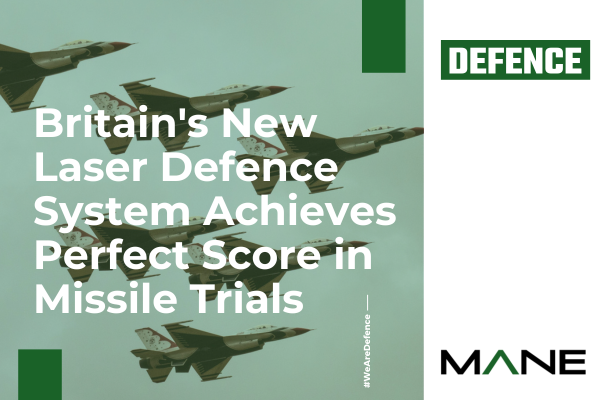Britain's New Laser Defence System Achieves Perfect Score in Missile Trials
28 Oct, 20242minsBritain's New Laser Defence System Achieves Perfect Score in Missile TrialsIn a significant ...

Britain's New Laser Defence System Achieves Perfect Score in Missile Trials
In a significant breakthrough for UK air defence technology, a new laser-based protection system has achieved a 100% success rate in defeating multiple missile threats during live-fire trials in Sweden. This development marks a major step forward in safeguarding RAF aircraft against increasingly sophisticated aerial threats.
The System at Work
The innovative defence system, developed by Team Pellonia - a partnership between Leonardo UK, Thales UK, and the Ministry of Defence's Defence Science and Technology Laboratory (Dstl) - operates with remarkable precision. When a threat is detected, Thales's Elix-IR warning system rapidly identifies incoming missiles using sophisticated algorithms to filter out background noise. Leonardo's Miysis directed infrared countermeasure then tracks the threat and deploys a precise jamming laser to defeat it.
Beyond Single Threats
Perhaps most impressively, the system demonstrated its ability to handle multiple simultaneous missile attacks during trials at Sweden's Vidsel Test Range. This capability is crucial in modern combat scenarios where aircraft might face numerous threats at once.
Protecting the Fleet
The RAF plans to fit this cutting-edge technology to several aircraft types, including:
• Shadow R2 intelligence-gathering aircraft
• A400M transport aircraft
• Potential deployment across other RAF platforms
Economic Benefits
The project showcases British technological expertise while delivering significant economic benefits:
• Supporting 700 jobs at Thales in Glasgow
• Maintaining 1,250 specialist positions at Leonardo in Edinburgh
• Strengthening both local and national economies through the supply chain
Industry Perspectives
Defence Secretary John Healey emphasised the system's strategic importance: "Identifying, tracking and defeating threats from the air in seconds is crucial to having the edge over those who try to do us harm. We're equipping our Armed Forces with the very latest technology to keep them safe and give them the advantage on operations."
Mark Elson, Dstl's Chief for Air Survivability, highlighted the system's long-term potential: "The design has the agility to protect platforms now and into the future, providing long-term operational advantage to the UK and our allies."
Technical Achievement
The system's success relies on several key innovations:
• Advanced threat detection algorithms
• Precise laser targeting capabilities
• Rapid response times
• Integration of multiple defensive systems
Leonardo's Senior Vice-President Mark Stead noted that the system "has again proven itself as a reliable, effective protection system and is flying operationally on many platforms today."
Export Potential
The successful trials have implications beyond the RAF. The system offers full operational independence and could be made available to export customers, potentially generating further economic benefits for the UK defence industry.
Future Applications
While currently focused on aircraft protection, the technology demonstrates Britain's growing capabilities in directed energy weapons. This could lead to further applications across different military platforms and scenarios.
This achievement represents more than just a new piece of military hardware. It demonstrates Britain's continuing ability to develop world-leading defence technology through effective collaboration between government research establishments and industry. The system's perfect performance in trials suggests that RAF aircraft will soon have significantly enhanced protection against missile threats, while simultaneously strengthening the UK's position in the global defence technology sector.
The success of Team Pellonia's laser defence system shows how British innovation, backed by government investment and industry expertise, can deliver cutting-edge military capabilities while supporting thousands of highly skilled jobs across the country. As modern warfare continues to evolve, such technological advances will be crucial in maintaining the RAF's operational effectiveness and protecting British service personnel.


